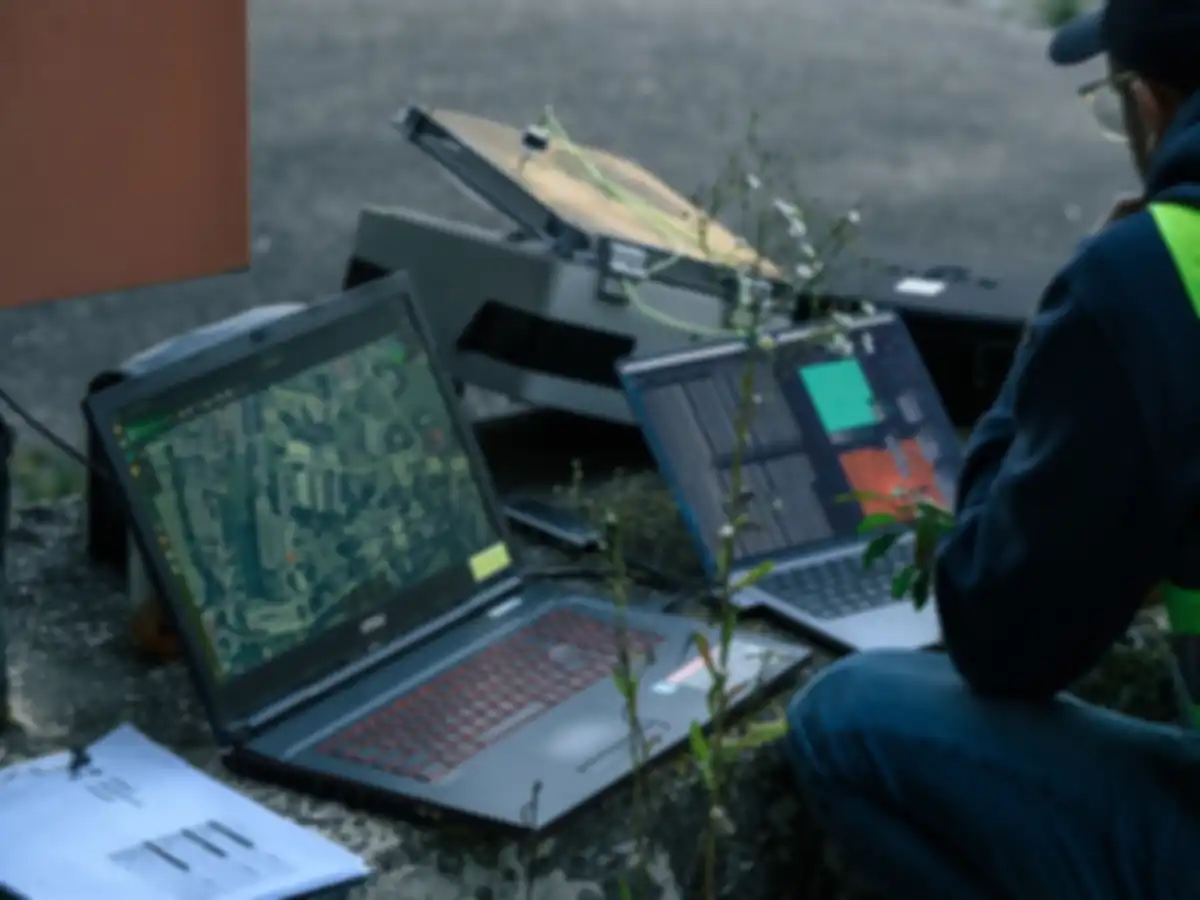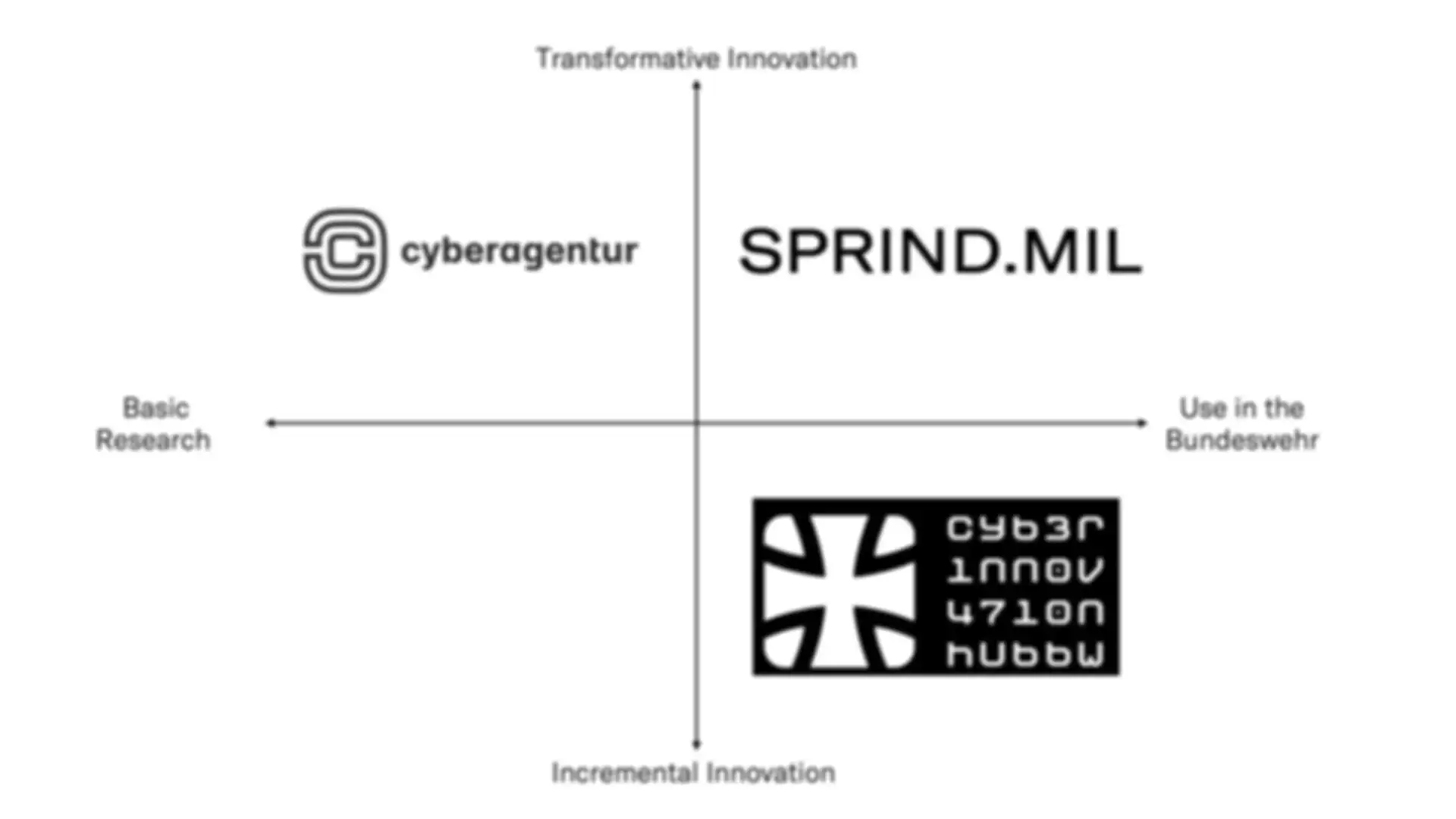3/19/2025
GERMANY NEEDS AN AGENCY FOR MILITARY INNOVATION
Promoting innovation in the military sector is key to securing peace and ensuring Germany’s ability to defend itself and its sovereignty. The war in Ukraine and the progressive withdrawal of the USA as staunch partner and ally of Europe have become catalysts for change.
Over the past 5 years, SPRIND established itself nationally and internationally as an agency that brings needed breakthrough innovations to life. Its governance and organizational structure are recognized globally as best practices. With these accomplishments, SPRIND believes it can contribute to defense and ensure European security and sovereignty. Wanting to play an active role, it recommends establishing SPRIND.MIL – a military innovation agency that is structured similarly to SPRIND, but it is managed independently. SPRIND.MIL can rapidly close the gap in the funding cycle by promoting and financing critical disruptive and superior military technology development. The focus is on accelerating innovation technology readiness levels (TRL) 3–9. SPRIND.MIL will take a unique approach to identify, test, validate, and advance transformative technologies through Red Teaming exercises in cooperation and coordination with the Bundeswehr, intelligence agencies, and European militaries.
SPRIND.MIL requires a starting budget of EUR 1 billion over the next five years in order to have a sustainable impact on the military innovation ecosystem. Politicians and the government should establish SPRIND.MIL immediately at the start of the new legislative period.
- GERMANY NEEDS AN AGENCY FOR MILITARY INNOVATION
Promoting innovation in the military sector is key to securing peace in the long term. It will ensure Germany’s ability to defend itself and secure its sovereignty. Through technological leadership, the goal is to gain a demonstrable advantage for defense and security forces throughout Europe. Empowering SPRIND.MIL adds to the necessary deterrence and will help avoid military conflicts in the future.
The launch of the Sputnik satellite in 1957 came as a big surprise to the USA and led to the creation of the Defense Advanced Research Projects Agency (DARPA) in 1958; an innovation agency with a focus on technologies for the defense sector and with a direct link to the US military. Since then, DARPA has advanced many military technologies such as stealth aircraft, precision guided weapons, as well as numerous dual-use technologies, including voice assistants, the Internet, satellite technology, and GPS.

- SPRIND AS A ROLE MODEL
SPRIND was founded in 2019 before the major geopolitical events in recent years. During its design and inception, the DARPA model served as a guide. Different from DARPA, SPRIND funds projects in the field of leap innovation to identify, validate, and empower innovations for civilian use. SPRIND is able to finance dual-use technologies because it is not precluded from making an exception when defense applications are possible.
In recent years, SPRIND has succeeded in setting up effective internal processes and funding instruments. The governance and organizational structure of SPRIND is seen as a positive case study for many internationally renowned organizations, including the European Innovation Council EIC, and the US National Science Foundation. An independent evaluation of the structure and processes of SPRIND underscore the value and importance as an organization of the German government.
With the parliamentary passing of the SPRIND Freedom Law (SPRINDFG), it received more agency to operate freely. With this entitlement, SPRIND has been able to evaluate over 2,000 project submissions, funded more than 150 potential breakthrough innovations, and awarded over 20 major financing projects.
While guided by the foundation of DARPA’s mission, SPRIND itself is not positioned to advance military technologies, as SPRIND’s staff and support services are currently focused on civil innovations. In addition, it does not have the necessary structures that would allow SPRIND to operate in a classified and secure environment. It is for this reason that SPRIND recommends establishing SPRIND.MIL – a military innovation agency that is structured similarly to SPRIND but is independent from it.
SPRIND can support the set-up by providing personnel, transferring processes and sample contracts into the new institution to not waste any time. In short SPRIND can incubate SPRIND.MIL until it is capable of acting as an independent company. As the SPRIND Freedom Law currently only applies to SPRIND, an amendment would be necessary to extend the authorization granted under the law to SPRIND.MIL. SPRIND has already carried out this type of incubation work for the Sovereign Tech Agency and EUDI Wallet.

- SPRIND.MIL
SPRIND.MIL will be the central point of contact for supporting transformative (breakthrough) innovations for the military. It will be open to input from universities and non-university research institutions, start-ups, and industry. The aim is to achieve technological dominance for Europe, which includes incubating and supporting technology innovation from other NATO countries, too. In Europe a coordinated effort it critical to the security and sovereignty of its citizens, which requires close collaboration and coordination. Every organization has a role to play and SPRIND.MIL will become a contributor to the community at large.
SPRIND.MIL will close the gap in cooperation with others by scouting and financing rapid technology development. The remit of SPRIND.MIL will focus on TRL 3–9, i.e., technologies coming out of basic research needing to be matured for the market. SPRIND.MIL will enable the rapid transfer of research results into applications in order to achieve the goal of technological dominance.
In order for this transfer to be successful, SPRIND.MIL will closely cooperate with the German armed forces, intelligence agencies, and European militaries. Currently, start-ups often fail due to the long procurement cycles of the Bundeswehr, which is why SPRIND.MIL will finance pilot projects and field tests. SPRIND.MIL will also become the transition and resource sponsor for successful technologies that are of interest or need to defense and mature these technologies to enable a rapid procurement.
The Bundeswehr will be involved in the innovation process from the beginning. SPRIND.MIL will have the unique focus of specifically identifying, testing, validating, and advancing transformative technologies with the Bundeswehr, intelligence agencies, and European militaries through Red Teaming exercises (i.e., real-world testing of defensive and offensive technologies in war games to simulate relevant military scenarios). Through theese Red Teaming exercises, SPRIND.MIL will enable the Bundeswehr, intelligence agencies, and European militaries to gain unique insights into new technologies and better understand their capabilities on the battlefield; in order to develop rapid countermeasures against such existing technologies, or to further develop them through SPRIND.MIL for the Bundeswehr, intelligence agencies, and European militaries.
SPRIND.MIL will work closely with private institutions and initiatives. Defense Accelerators
such as Palladion Defence, European Defense Tech, BASED, and many other initiatives would be welcome to support technology and start-up development. Private and state-funded investors will be brought to the table to provide the best possible financial support. In addition, representatives of the German armed forces, the European military, the intelligence and defense industry, and intelligence agencies are invited take advantage of having a first look at transformative technologies at SPRIND.MIL events.

- EMBEDDING SPRIND.MIL IN THE EXISTING MILITARY INNOVATION ECOSYSTEM
The Bundeswehr Cyber Innovation Hub is an important and successful Bundeswehr institution for introducing existing innovations in the Bundeswehr. While the Cyber Innovation Hub focuses on purchasing existing external products and services, financing research and development in the defense sector is not its focus. Its program brings significant improvements to the Bundeswehr, but it cannot support large-scale, transformative projects. A second organization in the ecosystem is the Cyber Agency. It was founded as a sister agency to SPRIND, and it is intended to support future technologies, particularly in the area of cyber security. The cyber agency focuses on TRL 1–4, promoting basic research and not the development of market-ready products. The establishment of SPRIND.MIL only makes sense if the agency is embedded in the existing innovation ecosystem and closes a relevant gap. The focus on transformative (breakthrough) innovations is particularly important.

- IMPLEMENTATION
The legislature should decide to establish SPRIND.MIL immediately at the start of the new legislative period. A budget item for SPRIND.MIL should be set up in 2025.
SPRIND is prepared to take over the incubation of SPRIND.MIL and will provide up to five full-time equivalents for the development of SPRIND.MIL and the transfer of knowledge. SPRIND will also take the lead in implementing the first Red Teaming exercises following the SPRIND Challenge model. This approach will ensure that SPRIND.MIL will immediately get started to accelerate innovation in the defense sector. The establishment of the structures, processes, and core team of SPRIND.MIL are to be completed by the beginning of 2026.



